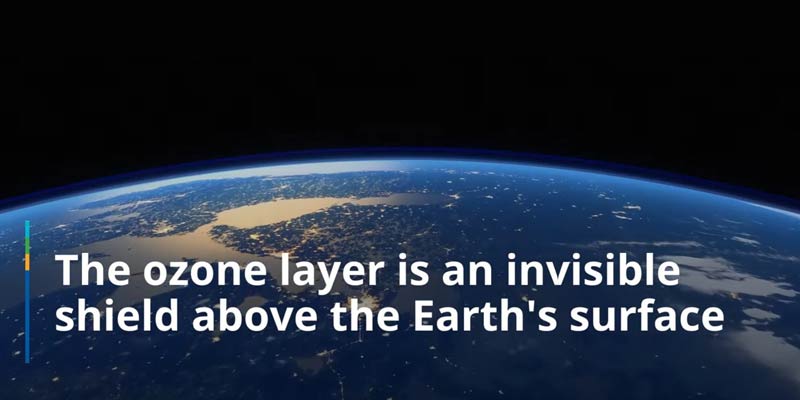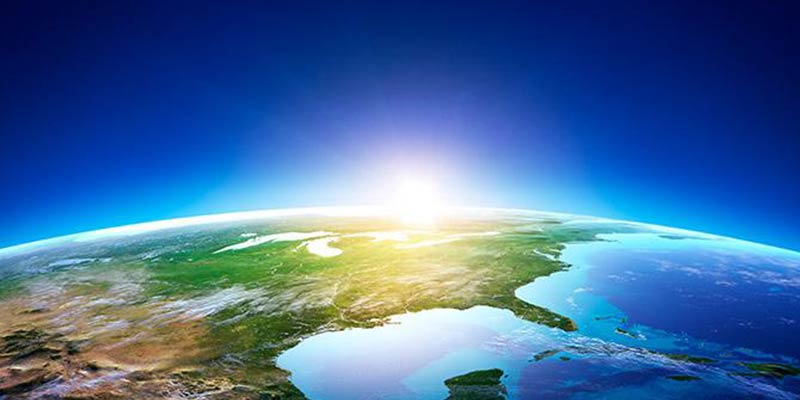- World
- Jan 10
Ozone layer will be completely healed by 2066, says UN study
• The ozone layer is on track to recover within four decades, with the global phaseout of ozone-depleting chemicals already benefitting efforts to mitigate climate change, according to a UN-backed panel of experts who presented a report at the American Meteorological Society convention in Denver.
• The UN-backed Scientific Assessment Panel to the Montreal Protocol on Ozone Depleting Substances, published every four years, confirms the phase out of nearly 99 per cent of banned ozone-depleting substances (ODSs) has succeeded in safeguarding the ozone layer, leading to notable recovery of the ozone layer in the upper stratosphere and decreased human exposure to harmful ultraviolet (UV) rays from the Sun.
• This 2022 Assessment is the tenth in a series that is provided to the Montreal Protocol by its Scientific Assessment Panel.
Key points of the study:
• The Montreal Protocol and its amendments have been effective in decreasing the abundance of ODSs in the atmosphere. The clearest signs of corresponding ozone recovery are seen in the upper stratosphere and in the Antarctic lower stratosphere in spring.
• If current policies remain in place, the ozone layer is expected to recover to 1980 values (before the appearance of the ozone hole) by around 2066 over the Antarctic, by 2045 over the Arctic and by 2040 for the rest of the world.
• Variations in the size of the Antarctic ozone hole, particularly between 2019 and 2021, were driven largely by meteorological conditions. Nevertheless, the Antarctic ozone hole has been slowly improving in area and depth since the year 2000.
• For the first time, the Scientific Assessment Panel examined the potential effects on ozone of the intentional addition of aerosols into the stratosphere, known as stratospheric aerosol injection (SAI).
• SAI has been proposed as a potential method to reduce climate warming by increasing sunlight reflection. Yet the panel cautions that unintended consequences of SAI could also affect stratospheric temperatures, circulation and ozone production and destruction rates and transport.
• The latest assessment has been made based on extensive studies, research and data compiled by a large international group of experts , including many from the World Meteorological Organisation (WMO), United Nations Environment Programme (UNEP), National Oceanic and Atmospheric Administration (NOAA), National Aeronautics and Space Administration (NASA) and European Commission.
What is ozone layer?
• Ozone is a highly reactive form of oxygen. Ozone is composed of three atoms of oxygen.
• Ozone occurs both in the Earth’s upper atmosphere and at ground level.
• Tropospheric or ground-level ozone is formed primarily from photochemical reactions between two major classes of air pollutants, volatile organic compounds (VOC) and nitrogen oxides (NOx). Ozone at ground level is a harmful air pollutant, because of its effects on people and the environment, and it is the main ingredient in “smog”.
• Although ozone is present in small concentrations throughout the atmosphere, most (around 90 per cent) exists in the stratosphere, a layer 10 to 50 kilometres above the Earth’s surface.
• In the upper atmosphere, ozone forms a protective layer that shields us from the Sun’s ultraviolet rays.
• The stratospheric ozone layer is Earth’s “sunscreen” – protecting living things from too much ultraviolet radiation from the Sun.
• This beneficial ozone has been partially destroyed by man-made chemicals, causing what is sometimes called a “hole in the ozone”.
• Ozone depletion is caused by human-related emissions of ozone-depleting substances (ODSs) and the subsequent release of reactive halogen gases, especially chlorine and bromine, in the stratosphere.
• ODSs include chlorofluorocarbons (CFCs), bromine-containing halons and methyl bromide, hydrochlorofluorocarbons (HCFCs), carbon tetrachloride (CCl4), and methyl chloroform.
What is Montreal Protocol and its Kigali Amendment?
• Montreal Protocol on Substances that Deplete the Ozone Layer is an international environmental treaty adopted in 1987 for protection of the ozone layer by phasing out the production and consumption of man-made chemicals, referred to as ozone depleting substances (ODS).
• The Montreal Protocol sits under the Vienna Convention for the Protection of the Ozone Layer. The Vienna Convention was adopted in 1985 following international discussion of scientific discoveries in the 1970s and 1980s highlighting the adverse effect of human activity on ozone levels in the stratosphere and the discovery of the “ozone hole”.
• The Montreal Protocol is signed by over 190 Parties. In January 2012, South Sudan ratified the Montreal Protocol, making it the first international environmental treaty to achieve universal ratification — a truly remarkable effort that reflects the universal acceptance and success of the agreement.
• The Parties to the Protocol meet once in a year to make decisions aimed at ensuring the successful implementation of the agreement.
• In October 2016, during the 28th Meeting of the Parties to the Montreal Protocol on Substances that Deplete the Ozone Layer in Kigali (in Rwanda), more than 170 countries agreed to amend the Protocol.
• The Kigali Amendment requires participating nations to phase down production and use of hydrofluorocarbons by 85 per cent over the next 14 years, as part of a global phaseout intended to slow climate change.
• More than 130 nations, including India, China and Russia, have formally ratified the amendment, which scientists say could help the world avoid a half-degree Celsius of global warming.
• India became a Party to the Montreal Protocol on Substances that Deplete the Ozone Layer on June 19, 1992 and since then has ratified the amendments to the Montreal Protocol. In August 2021, the Union Cabinet gave its nod for ratification of the Kigali Amendment for phase down of hydrofluorocarbons (HFCs).
What are hydrofluorocarbons (HFCs)?
• Hydrofluorocarbons were introduced as non-ozone depleting alternative to chlorofluorocarbons (CFC) such as R-12 and hydrochlorofluorocarbons (HCFC) such as R-21.
• While HFCs do not deplete the stratospheric ozone layer, they have high global warming potential, which have adverse impact on climate.
• Recognising the growth in use of HFCs, especially in refrigeration and air-conditioning sector, the Parties to the Montreal Protocol reached agreement at their 28th Meeting of the Parties (MOP) held in October 2016 in Kigali, Rwanda to add HFCs to the list of controlled substances and approved a timeline for their gradual reduction by 80-85 per cent by late 2040s.
• In January 2020, India successfully completed the phasing out of Hydrochlorofluorocarbon (HCFC)-141b, used by foam manufacturing companies. HCFC-141b was used mainly as a blowing agent in the production of rigid polyurethane (PU) foams.
Manorama Yearbook app is now available on Google Play Store and iOS App Store



